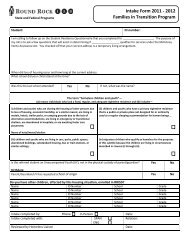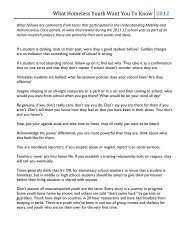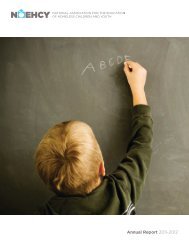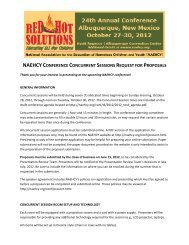The McKinney-Vento Act and Children and Youth ... - State of Michigan
The McKinney-Vento Act and Children and Youth ... - State of Michigan
The McKinney-Vento Act and Children and Youth ... - State of Michigan
Create successful ePaper yourself
Turn your PDF publications into a flip-book with our unique Google optimized e-Paper software.
From Law into Practice:<br />
Strategies to Maximize the<br />
<strong>McKinney</strong>-<strong>Vento</strong> <strong>Act</strong> for <strong>Youth</strong><br />
Awaiting Foster Care Placement<br />
This section presents practical strategies for maximizing the benefits <strong>of</strong> the<br />
<strong>McKinney</strong>-<strong>Vento</strong> <strong>Act</strong> for youth in out-<strong>of</strong>-home care:<br />
1. Building effective collaborations between child welfare <strong>and</strong><br />
education.<br />
2. Defining awaiting foster care placement under the <strong>McKinney</strong>-<br />
<strong>Vento</strong> <strong>Act</strong>.<br />
3. Designing <strong>and</strong> implementing strategies to maximize school<br />
stability <strong>and</strong> provide transportation.<br />
4. Ensuring that education <strong>and</strong> child welfare agencies have staff with<br />
sufficient training <strong>and</strong> capacity to ensure immediate enrollment,<br />
attendance, <strong>and</strong> services.<br />
5. Clarifying education-related roles <strong>and</strong> responsibilities.<br />
6. Implementing procedures for schools <strong>and</strong> child welfare agencies<br />
to share information in order to deliver timely, effective services to<br />
children in care.<br />
7. Treating youth in out-<strong>of</strong>-home care with dignity, underst<strong>and</strong>ing,<br />
<strong>and</strong> discretion.<br />
<strong>The</strong>se strategies <strong>of</strong>fer education <strong>and</strong> child welfare agencies suggestions as<br />
to how they can support the educational stability <strong>and</strong> success <strong>of</strong> youth in<br />
out-<strong>of</strong>-home care. Most importantly, these strategies are informed by the<br />
experiences <strong>and</strong> recommendations <strong>of</strong> youth who have been in out-<strong>of</strong>-home<br />
care themselves.<br />
Continued from page 16.<br />
permits states to use IV-E<br />
maintenance dollars to support<br />
school <strong>of</strong> origin transportation).<br />
• If not in the child’s best interest<br />
to remain in the school <strong>of</strong><br />
origin, immediately enroll the<br />
child in an appropriate school.<br />
• Ensure that child education<br />
records are provided to the<br />
new school.<br />
• Ensure the child welfare<br />
placement takes into account<br />
not just the proximity to the<br />
school <strong>of</strong> origin, but also<br />
the appropriateness <strong>of</strong> the<br />
education setting.<br />
• Ensure all compulsory schoolaged<br />
children are enrolled in<br />
school full time.<br />
<strong>State</strong> laws also give child welfare<br />
agencies responsibilities for<br />
the education <strong>of</strong> youth in their<br />
care. For example, Virginia’s SB<br />
1006 requires caseworkers to<br />
notify schools within 72 hours<br />
<strong>of</strong> a student being placed in<br />
foster care <strong>and</strong> to track down<br />
necessary records within 30 days<br />
<strong>of</strong> school enrollment.<br />
Strategies for Improving Educational Outcomes through School Stability 17














